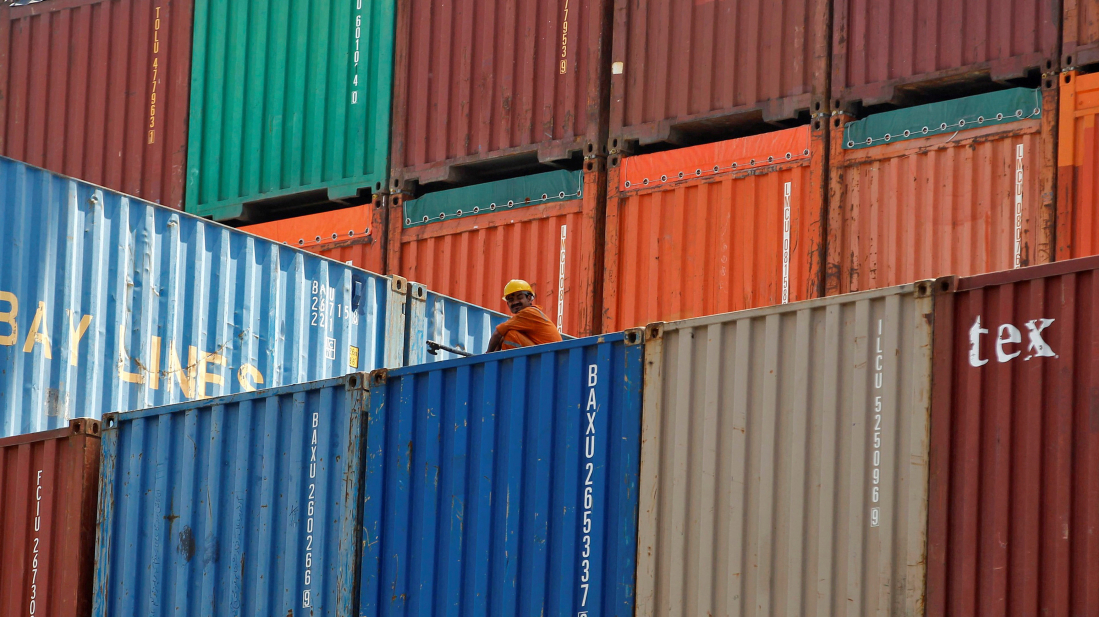Russian airstrike destroys residential area in Kharkiv, Ukraine
Russian airstrikes have devasted apartment buildings in a residential area of Kharkiv, north-eastern Ukraine, injuring at least 25 people according to...

U.S.-India trade relations plunged into crisis on Wednesday after President Donald Trump issued an executive order imposing an additional 25% tariff on Indian goods, citing India's continued reliance on Russian oil.
The decision follows the collapse of trade negotiations and marks the most significant downturn in bilateral ties since Trump resumed office in January.
The order, which raises tariffs on some Indian products to as much as 50%, will take effect 21 days after 7 August. Key Indian export sectors such as textiles, footwear, and gems and jewellery are expected to be hit hardest.
In a sharp rebuke, India’s Ministry of External Affairs called the move “extremely unfortunate” and said, “India will take all actions necessary to protect its national interests.” It added that the country’s oil imports are based on energy security considerations and market dynamics, not politics.
The timing of the U.S. decision coincides with Indian Prime Minister Narendra Modi’s planned visit to China, his first in more than seven years, prompting speculation about shifting strategic alignments.
Madhavi Arora, an economist at Emkay Global, warned that the new levies would “practically kill trade between the two nations”. Another economist, Garima Kapoor from Elara Securities, noted that the tariff shock could pressure the Indian rupee and spur new calls for fiscal relief.
India imported a record $52 billion of Russian oil in 2024, according to government data. The White House did not comment on whether China, another major Russian oil buyer, might face similar penalties. However, U.S. Treasury Secretary Scott Bessent recently told Chinese officials that failing to curb such purchases could trigger new tariffs under pending legislation.
A senior Indian government official said the steep tariff rate and sudden nature of the move caught New Delhi off guard, even as it remained engaged in trade discussions with Washington. There are now behind-the-scenes efforts to negotiate a compromise that could involve a gradual cut in Russian oil imports in exchange for tariff relief.
The trade fallout adds further strain ahead of the 12 August expiry of the U.S.-China tariff truce, after which both sides are expected to reintroduce triple-digit duties on a wide range of goods.
Dozens of people are feared dead and around 100 others injured after an explosion tore through a crowded bar during New Year’s Eve celebrations at the Swiss ski resort of Crans-Montana, authorities said.
At least 47 people were killed and 112 injured after a fire broke out at a crowded bar in the Swiss ski resort town of Crans-Montana during New Year’s Eve celebrations, Italian Foreign Minister Antonio Tajani told Italian media on Thursday.
India has approved a major arms deal with Israel valued at approximately $8.7 billion, highlighting the deepening defence partnership between the two countries.
Russian athletes will not be allowed to represent their country at the Milano Cortina Winter Olympics even if a peace deal is reached with Ukraine, International Olympic Committee President Kirsty Coventry said in an interview with an Italian newspaper.
India and Pakistan on Thursday exchanged lists of nuclear facilities as well as civilian prisoners, under long-standing bilateral agreements, according to official statements from both countries.
A 6.5-magnitude earthquake has struck the southern state of Guerrero in Mexico.
Suhail Shaheen, Afghanistan’s ambassador in Doha, has again urged the United Nations to transfer Afghanistan’s seat at the UN to the Taliban-led administration, arguing the current arrangement no longer reflects realities in the country.
Russian airstrikes have devasted apartment buildings in a residential area of Kharkiv, north-eastern Ukraine, injuring at least 25 people according to the local governor.
Turkish President Recep Tayyip Erdoğan said he would have a phone call with U.S. President Donald Trump on Monday to discuss peace efforts between Ukraine and Russia as well as issues surrounding Gaza.
Russian athletes will not be allowed to represent their country at the Milano Cortina Winter Olympics even if a peace deal is reached with Ukraine, International Olympic Committee President Kirsty Coventry said in an interview with an Italian newspaper.
You can download the AnewZ application from Play Store and the App Store.

What is your opinion on this topic?
Leave the first comment